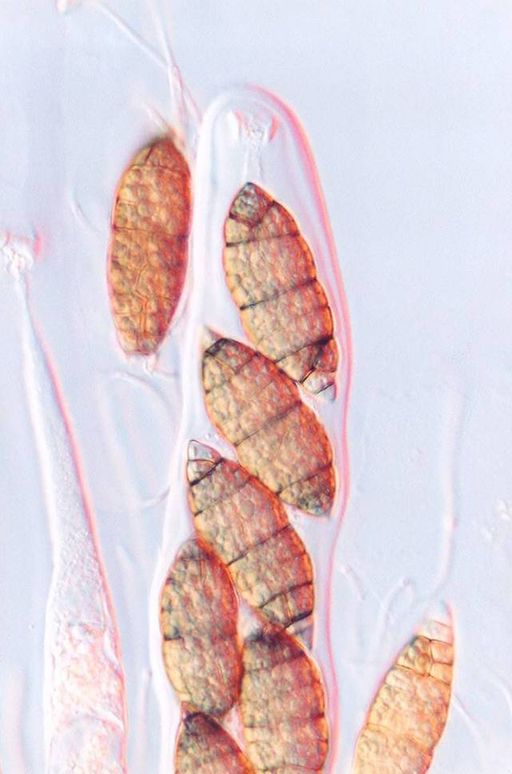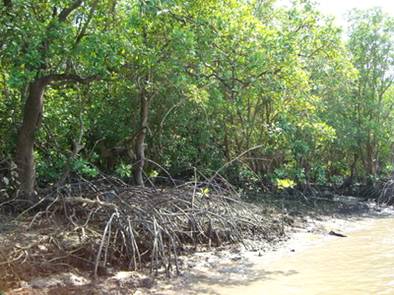| Khanom Marine Biodiversity Initiative Project |
 |
 |
 |
|
In the past decades, deforestation and environmental problems have led to tremendous loss of biodiversity and ecosystems. Nevertheless, Thailand still retains substantial bioresources and natural beauty to be enjoyed by casual visitors and naturalists as well as by professional biologists. Such is the case at Khanom – Mu Koh Thale Tai (or South Sea Islands) including Samui Island in the Gulf of Thailand. This area has beautiful scenery with natural treasures including some of the world’s most famous beaches and diving sites, and marvelous caves as well as a cultural diversity in folklore, making the South Sea Islands one of the most popular destinations for tourists.
We can proudly say that the Khanom Marine Biodiversity Initiative Project has inspired and generated a new body of knowledge that has already appeared in scientific journals. Other publications such as books and magazines for general audiences have been made for public awareness of these valuable bioresources. Workshops and training for school students and local people have been conducted for appropriate management of Pink Dolphins and fireflies for ecotourism. “Khanom Marine Biodiversity Initiative Project” was partially funded by BRT, the TOTAL Foundation of France and TOTAL E&P Thailand, the gas and oil business cooperative in the Gulf of Thailand. The project thus forms part of corporate social responsibility (CSR) of the private sectors in collaboration with the BRT and local communities in an effort to promote biodiversity conservation and sustainable development in Thailand. This colorful and informative book on marine life and ecosystems will provide a brief introduction to unseen southern Thailand’s biological, cultural and historical wealth for nature lovers and tourists. ------------------------------------------- |
ผลงานทางวิชาการ
ชุดโครงการ BRT
ข่าวล่าสุด
- pumi Aromatherapy pillow & mattress for anti-dust mite
- การศึกษาดูงานการพัฒนาโรงไฟฟ้าหงสา แขวงไชยบุรี สาธารณรัฐประชาธิปไตยประชาชนลาว(สปป.ลาว)
- การประชุม Inclusive Innovation
- นิทรรศการทรัพยากรชีวภาพ ในงานมหกรรมวิชาการ สกว.
- ผลิตภัณฑ์กำจัดคราบน้ำมันจากผลงานร่วมวิจัยได้รับรางวัล Golden Medal ด้านนวัตกรรม "Bioremediation Agent developed to Greenovation product"


 Thailand is situated in the tropical region of Southeast Asia just north of the equator from N5º 37´ to 20° 30´ and from E97º 20´ to 105º 39´. The country occupies an area of 513,115 km2 with about 25% tropical forests and 2,600 km of coastline. This area includes the Gulf of Thailand facing the South China Sea in the east and the Andaman Sea in the west covering a total area of 420,000 km2 which is rich in marine biodiversity and encompasses a highly productive fishery. Thailand is also well known for its natural wealth of white sandy beaches, beautiful coral reefs and rocky mountains all of which have become popular tourist attractions.
Thailand is situated in the tropical region of Southeast Asia just north of the equator from N5º 37´ to 20° 30´ and from E97º 20´ to 105º 39´. The country occupies an area of 513,115 km2 with about 25% tropical forests and 2,600 km of coastline. This area includes the Gulf of Thailand facing the South China Sea in the east and the Andaman Sea in the west covering a total area of 420,000 km2 which is rich in marine biodiversity and encompasses a highly productive fishery. Thailand is also well known for its natural wealth of white sandy beaches, beautiful coral reefs and rocky mountains all of which have become popular tourist attractions.  Recognizing the prime importance of bioresources in the coastal area, BRT has launched an area-based research program on “Marine Biodiversity: Khanom - Mu Koh Thale Tai Initiative”. Mu Koh Thale Tai (or South Sea Islands) includes 5 major islands, i.e., Tan Is, Rap Is., Wang Nok Is., Wang Nai Is., and Mudsum Is. These areas belong to Khanom District, Nakhon Si Thammarat Province. This 3-year (2006-2008) initiative project was aimed to support research and training in marine biodiversity for young biologists and local communities as well as gather basic information on marine life occurring in these pristine habitats. The project’s management was based on a multidisciplinary approach among different groups of marine biologists. This project covered a general survey of marine life as well as an analysis of biotic and physical environments. The data collected will be useful for the long-term monitoring of the marine ecosystem in response to the effects of physical changes, e.g., a rise of sea temperature and water pollution.
Recognizing the prime importance of bioresources in the coastal area, BRT has launched an area-based research program on “Marine Biodiversity: Khanom - Mu Koh Thale Tai Initiative”. Mu Koh Thale Tai (or South Sea Islands) includes 5 major islands, i.e., Tan Is, Rap Is., Wang Nok Is., Wang Nai Is., and Mudsum Is. These areas belong to Khanom District, Nakhon Si Thammarat Province. This 3-year (2006-2008) initiative project was aimed to support research and training in marine biodiversity for young biologists and local communities as well as gather basic information on marine life occurring in these pristine habitats. The project’s management was based on a multidisciplinary approach among different groups of marine biologists. This project covered a general survey of marine life as well as an analysis of biotic and physical environments. The data collected will be useful for the long-term monitoring of the marine ecosystem in response to the effects of physical changes, e.g., a rise of sea temperature and water pollution.












